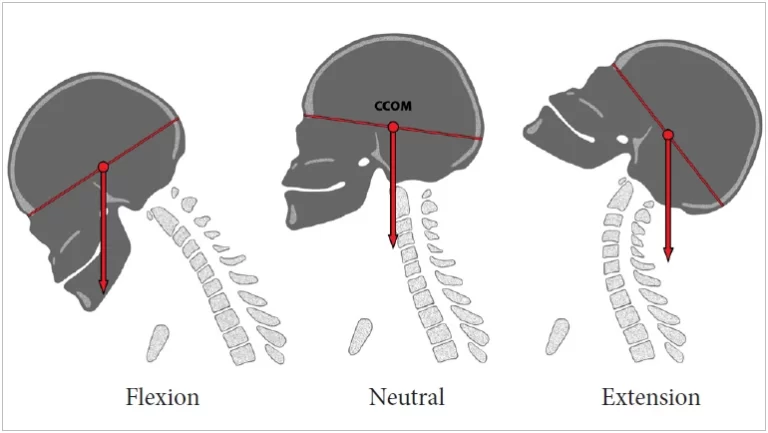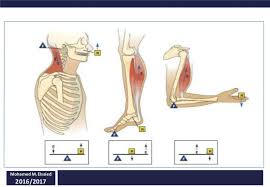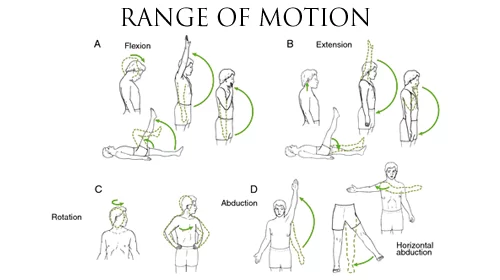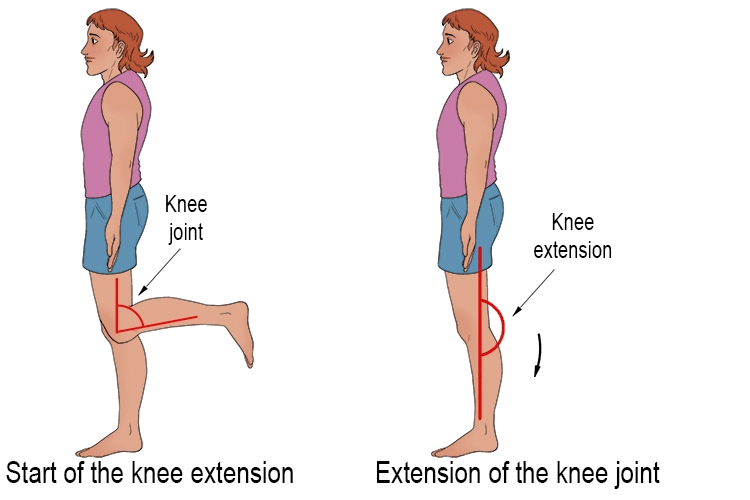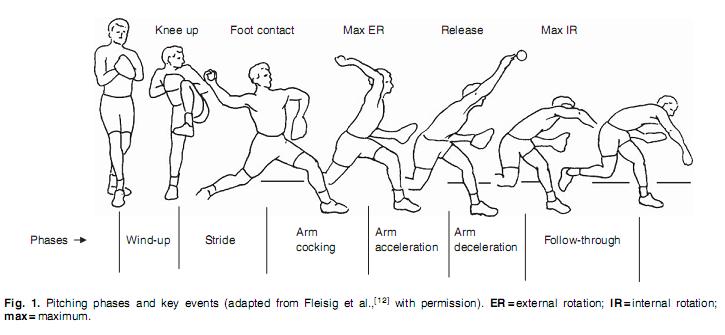USES OF FORCE IN PHYSIOTHERAPY
Definition: force is the push or pulls on an object with mass that causes it to change velocity (to accelerate). Force represents a vector, which means it has both magnitude and direction.
force An agent which produces or tends to produce, destroy, or tends to destroy the motion of a body is called force. ? Unit of force is Newton.
In equations and diagrams, a force is usually denoted by the symbol F. An example is an equation from Newton’s second law:
F = m·a
where F = force, m = mass, and a = acceleration.
Characteristic of force :
MAGNITUDE: Magnitude of force may be 10kn etc. DIRECTION: It has a certain fixed direction.
NATURE: It may be tensile or compressive.
Units of Force
The SI unit of force is Newton (N). Other units of force include the dyne, kilogram-force (kilopond), poundal, and pound-force.
Galileo Galilei and Sir Isaac Newton described how the force works mathematically. Galileo’s two-part presentation of the inclined-plane experiment (1638) established two mathematical relationships of naturally-accelerated motion under his definition, strongly influencing how we measure force to this day. Newton’s Laws of Motion (1687) predict the action of forces under normal conditions as well as in response to change, thus laying the foundation for classical mechanics.
The most important aspect of bio-mechanics to consider is force.
Force is simply a push or a pull exerted by one object on another. For example, when a muscle contracts it creates a force that is transferred to the tendon to pull on the bony attachment, thus resulting in motion. An important consideration with force is that it is a vector quantity.
vector quantity always has 3 variables:
A Point of Application
A Magnitude
A Direction
Types of Forces
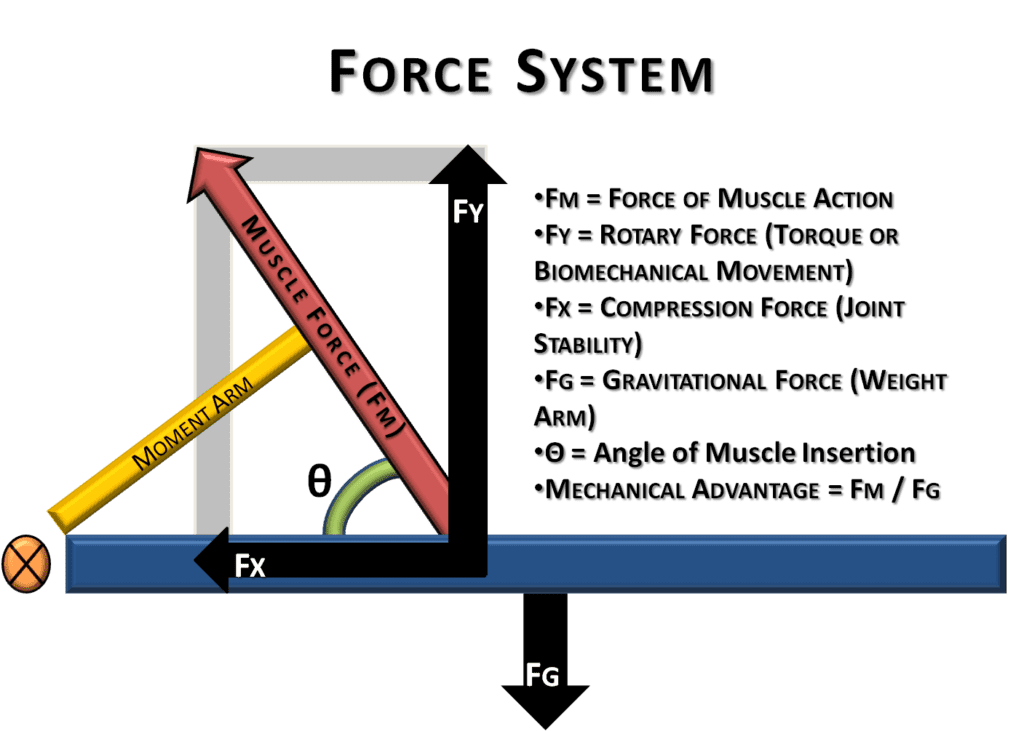
There are many types of forces to consider when looking at biomechanics. It is only meant to display the amount of complexity involved with human bio-mechanics and to help compose a free-body diagram.
Motion Forces -Rotatory, Tranlatory, Curvilinear
External Forces – Gravity, Wind, Objects, Other People
Internal Forces – Muscles, Connective Tissue (Elastic), Bone
Reactionary Forces – Ground Reaction, Joint Reaction, Gliding/Shear/Friction
CONTACT FORCES: Force produced by direct contact of bodies is known as contact force. It may be pull-type or push-type.
BODY FORCES: Forces produced without contact with the bodies are called body force. It is the force that holds together the particles forming the rigid bodies.
POINT FORCES: Force acting at a point is called point force. ? It acts on a very small area, compared to the total surface area.
DISTRIBUTED FORCE: When force is distributed over a large area it is called distributed force.
EXTERNAL & INTERNAL FORCE: The force exerted by weight on a body is external force, while the resistance offered to retain its shape is called internal force.
ACTION & REACTION: As per Newton’s third law, whenever a body exerts a force (action) on another body. Does the other body exert a similar force on the former body known as a reaction? Action= Reaction
FRICTIONAL FORCE: Resisting force offered during the sliding of a body by the surface in contact is called frictional force.
- SYSTEM OF FORCES: When two or more forces act on a body, they are called to form a system of forces.
- CO-PLANAR FORCES: Forces whose line of action lies on the same plane, are known as co-planar forces.
- CONCURRENT FORCES: The forces which meet at one point, are known as concurrent forces.
- CO-LINEAR FORCES: The forces whose line of action lie on the same line, are known as collinear force.
- CO-PLANAR CONCURRENT FORCES: Forces that meet at one point & lines of action also lie on the same plane are known as coplanar concurrent forces.
- NON-CO-PLANAR CONCURRENT FORCES: Forces whose line of action do not lie on the same plane, but they meet at one point.
- CO-PLANAR NON-CONCURRENT FORCES: The forces whose line of action lies on the same plane but do not meet at one point are known as coplanar non-concurrent forces.
- NON-CO-PLANAR NON-CONCURRENT FORCES: Forces whose line of action do not lie on the same plane & they do not meet at any point
- LIKE PARALLEL FORCES: Forces whose line of action are parallel to each other & all of them act in the same direction.
- UNLIKE PARALLEL FORCES: Forces whose lines of action are parallel to each other but all of them do not act in the same direction.
- SPATIAL FORCES: Forces acting in space are known as spatial forces. ? Forces acting in space but meeting at one point are known as spatial concurrent forces.
- RESOLVED FORCES: Splitting of forces into their component unit is called the resolution of forces. ? This is the reverse process which consists of expressing a single force in terms of their components
Bottom Line :
Force is the basic component that bio-mechanics are built upon. Force is a vector component that has a point of application, a magnitude, and a direction. There are many types of forces that act on a biomechanical system. Being able to construct a detailed free-body diagram of the primary segment and adjacent segments will help to develop the full static and/or dynamic biomechanical picture.

